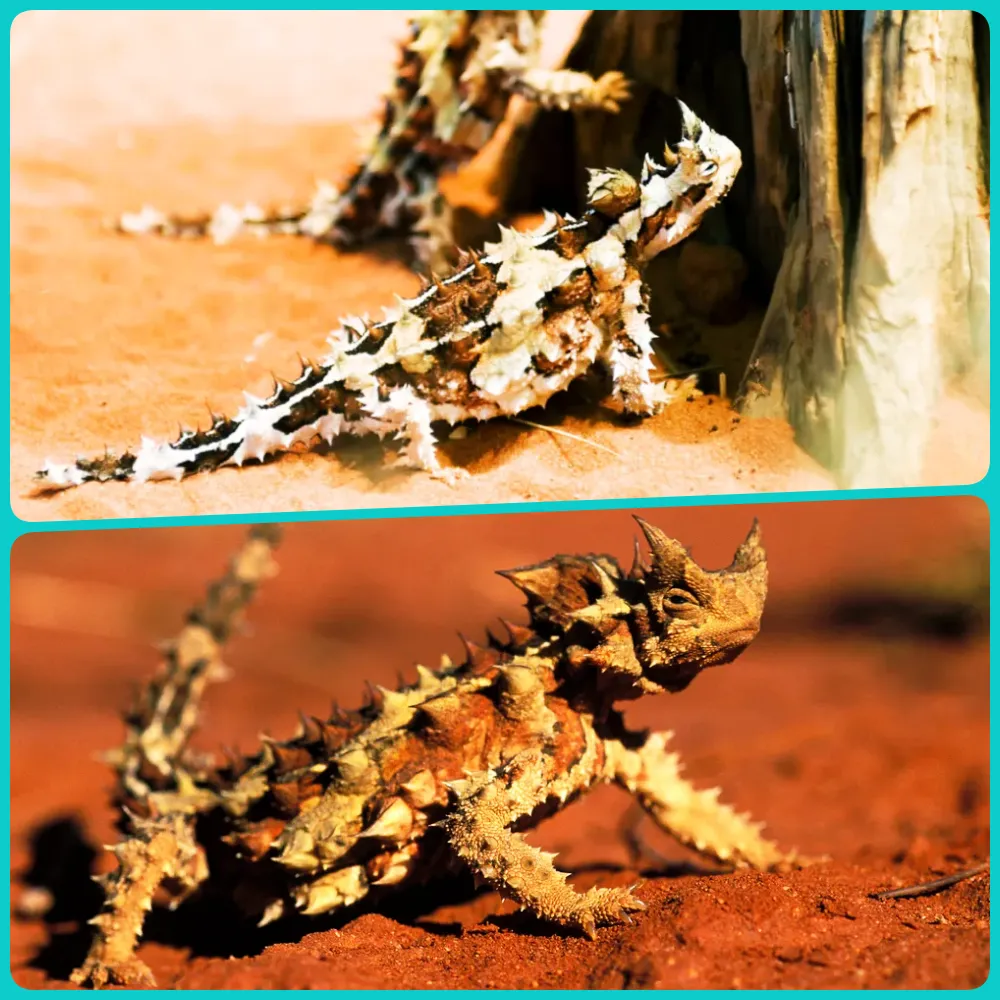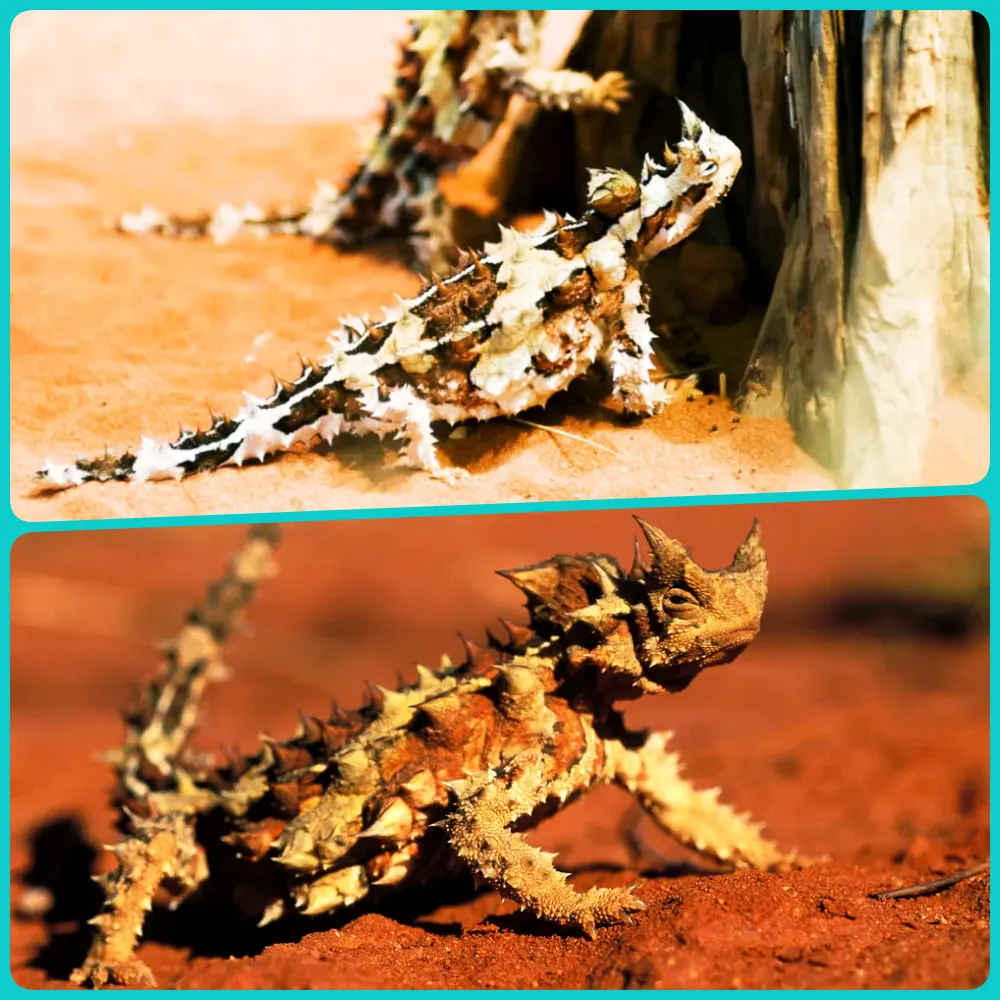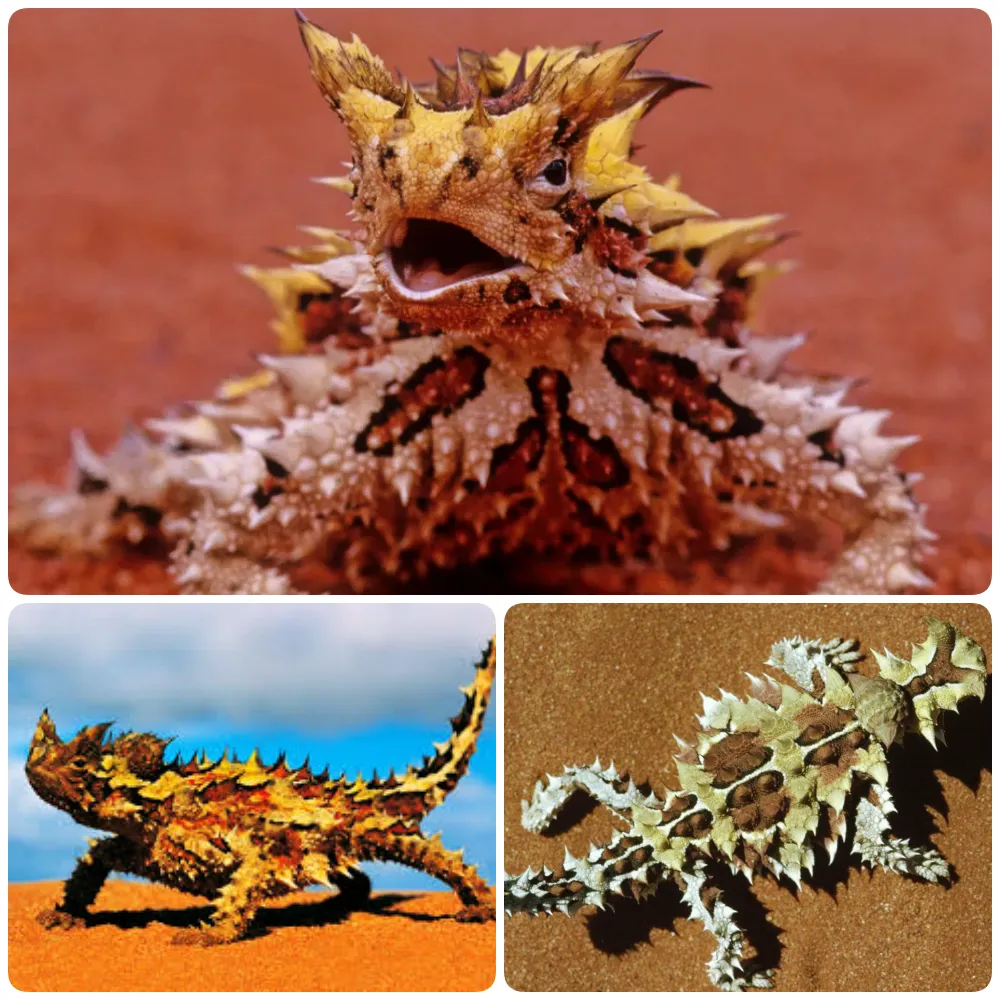
Discover the incredible Thorny Devil, a lizard with a fake head, spiky armor, and a unique way of sipping water from sand. Learn how this remarkable creature thrives in Australia’s harsh deserts with its unusual defenses and adaptations.
Australia’s Armor-Plated Lizard with a Unique Sip
Meet the Thorny Devil, one of Australia’s most bizarre and fascinating residents. This small, spike-covered lizard, native to the arid scrublands and deserts of Australia, stands out not just for its peculiar appearance but for its extraordinary survival strategies.
A Spiky Defense Mechanism
Growing up to 8 inches (20 centimeters) in length, the Thorny Devil boasts an impressive arsenal of defenses. Its body is covered in sharp, thorn-like spikes that deter potential predators by making it nearly impossible to grab, bite, or swallow. But that’s not all; when threatened, this ingenious lizard tucks its real head between its front legs and presents a “false head” on the back of its neck. This deceptive maneuver ensures that the vulnerable real head is protected, giving the Thorny Devil a fighting chance to escape danger.

Walking the Walk
The Thorny Devil’s slow, jerky walk is another clever defense tactic. This method of locomotion is believed to confuse predators, making it harder for them to gauge the lizard’s true speed and intentions. By moving intermittently, the Thorny Devil avoids triggering a predator’s chase response, thus minimizing its chances of becoming prey.
Master of Moisture
Adapted to the extreme conditions of its environment, the Thorny Devil has a unique way of staying hydrated. When temperatures soar, it buries itself in sand to shield itself from the harsh sun. Its skin features special channels that draw moisture from damp sand and direct it to the lizard’s mouth like a built-in straw. This remarkable adaptation allows the Thorny Devil to survive in one of the most challenging climates on Earth.
Color-Changing Camouflage
To regulate its body temperature, the Thorny Devil can change color. In the cooler mornings, it sports a drab brown hue, which shifts to a lighter yellow as temperatures rise. This color change not only helps in reflecting sunlight but also aids in camouflaging, ensuring the Thorny Devil blends seamlessly with its surroundings when necessary.
A Mythical Name
The Thorny Devil’s scientific name, Moloch horridus, draws from a blend of myth and literature. Named after the Canaanite god Moloch, known from John Milton’s Paradise Lost as a deity requiring child sacrifices, the Thorny Devil’s name reflects its fearsome appearance. However, this lizard is harmless to humans, although it does wage a relentless battle against ants, consuming thousands of them daily with its sticky tongue and hard teeth.
The Thorny Devil is a marvel of evolution, showcasing nature’s ingenuity through its defensive adaptations and survival strategies. With its spike-covered body, deceptive tactics, and unique hydration methods, this lizard epitomizes the extraordinary adaptations required to thrive in Australia’s harsh desert environment.







